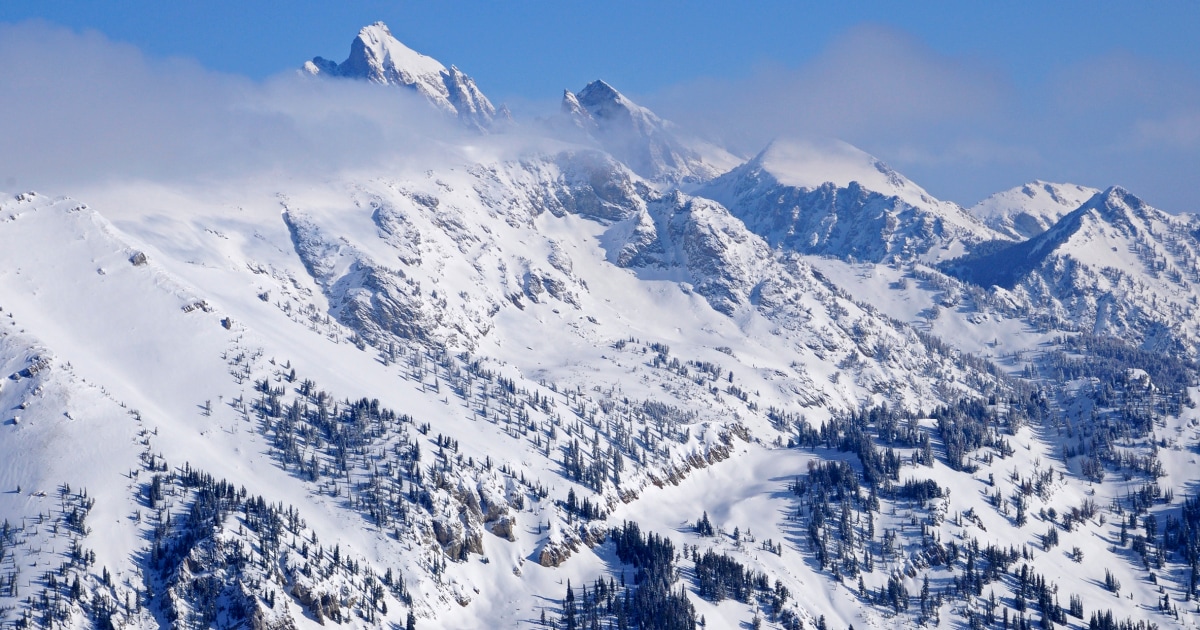Deadly Avalanche Strikes Wyoming: Understanding the Risks of Backcountry Adventures
A recent tragedy in western Wyoming has brought to light the hidden dangers that lurk in the snowy expanses of backcountry terrain. An avalanche claimed the life of one individual, an incident that serves as a stark reminder of the risks associated with outdoor exploration in these beautiful yet perilous environments. As outdoor enthusiasts flock to the backcountry for adventure, the question arises: how can we ensure our safety while enjoying these majestic landscapes?
The Incident: What Happened?
The avalanche struck without warning in a popular backcountry area, known for its stunning views and challenging terrain. Reports indicate that the victim was part of a group exploring the area when the snow gave way, resulting in a swift and deadly rush of snow and debris. Rescue efforts were launched immediately, but unfortunately, they were unable to save the individual.
This incident has sparked a wave of concern within the outdoor community, highlighting the unpredictable nature of avalanches and the importance of understanding the risks involved in backcountry adventures.
Understanding Avalanches: The Science of Snow
Avalanches are a natural phenomenon that can occur when the stability of a snowpack is compromised. Several factors contribute to the likelihood of an avalanche:
- Snowpack Conditions: The structure of the snow layers, including their density and moisture content, plays a critical role in stability.
- Weather Influences: Recent heavy snowfall, warming temperatures, and wind can all contribute to avalanche risk.
- Terrain: Steep slopes, particularly those between 30 and 45 degrees, are more susceptible to avalanches.
- Human Activity: Skiing, snowboarding, and snowmobiling can trigger avalanches, especially in backcountry areas.
Understanding these factors is crucial for anyone considering a backcountry adventure. The unpredictability of nature means that even experienced adventurers must remain vigilant and informed.
Safety Measures: How to Stay Safe in the Backcountry
While the allure of backcountry exploration is undeniable, safety must always be the top priority. Here are some essential safety measures to consider:
- Education: Take an avalanche safety course. Organizations like the American Avalanche Association offer courses that teach the fundamentals of avalanche awareness, rescue techniques, and snowpack assessment.
- Equipment: Always carry essential safety gear, including:
- Avalanche transceiver
- Probe pole
- Shovel
- First aid kit
- Emergency communication device
- Check Conditions: Before heading out, consult avalanche forecasts and reports from local authorities. Websites such as the Avalanche.org provide valuable information about current conditions.
- Travel with a Partner: Never venture into the backcountry alone. Having a partner not only increases safety but also allows for shared decision-making and support during emergencies.
- Plan Your Route: Choose your route carefully, avoiding steep slopes and known avalanche paths. Always have a backup plan in case conditions deteriorate.
The Role of Technology in Avalanche Safety
Advancements in technology are transforming how outdoor enthusiasts approach avalanche safety. Here are some innovative tools and technologies that can enhance safety in the backcountry:
- Avalanche Beacons: These devices help locate individuals caught in an avalanche. They emit a signal that can be detected by rescuers equipped with similar devices.
- GPS and Mapping Apps: Modern smartphones equipped with GPS capabilities can help adventurers navigate and track their routes, providing real-time information about their location.
- Weather Monitoring Devices: Portable weather stations allow users to monitor changing conditions in real-time, providing critical information about temperature, wind, and precipitation.
While technology can greatly enhance safety, it’s essential to remember that no device can replace sound judgment and thorough preparation.
Respecting Nature: The Importance of Awareness
Backcountry adventures are not just about thrill-seeking; they are also about respecting the environment and understanding the risks that come with it. The recent avalanche tragedy serves as a poignant reminder of the power of nature and the importance of preparedness. Here are a few key takeaways:
- Stay Informed: Knowledge is power. Stay updated on local conditions and learn from past incidents.
- Practice Leave No Trace Principles: Respect the wilderness by minimizing your impact. This includes sticking to established trails and not disturbing wildlife.
- Promote Safety Culture: Encourage fellow adventurers to prioritize safety and share knowledge about avalanche risks and safety measures.
Conclusion: A Call to Action for Outdoor Enthusiasts
The deadly avalanche that struck Wyoming serves as a stark reminder of the inherent risks of backcountry adventures. As outdoor enthusiasts, it’s our responsibility to prioritize safety and respect for nature. By educating ourselves, investing in the right equipment, and fostering a culture of safety, we can continue to enjoy the breathtaking beauty of our natural surroundings while minimizing the risks associated with backcountry exploration.
In the face of nature’s unpredictability, let’s commit to being prepared, informed, and respectful. The mountains are calling, but they can be perilous. Together, we can ensure that our adventures are not only thrilling but also safe.
See more Your Daily Weather



